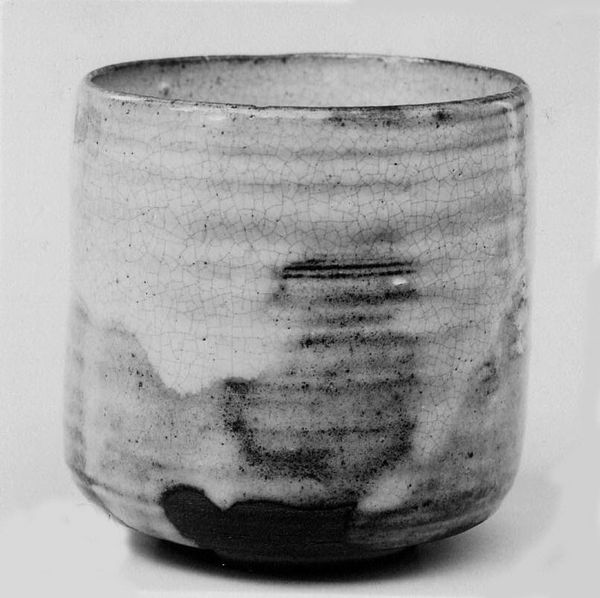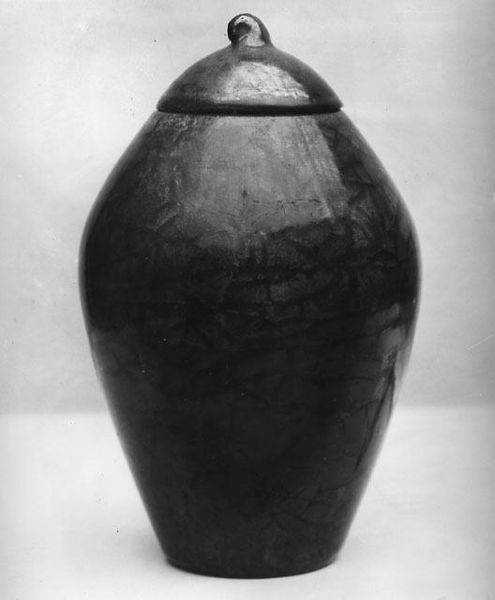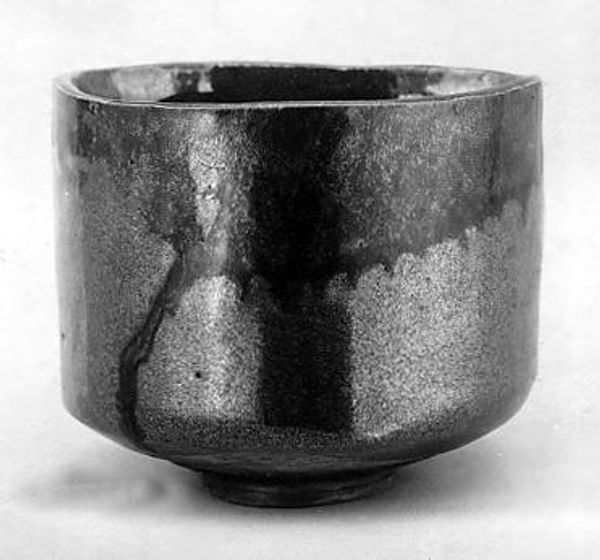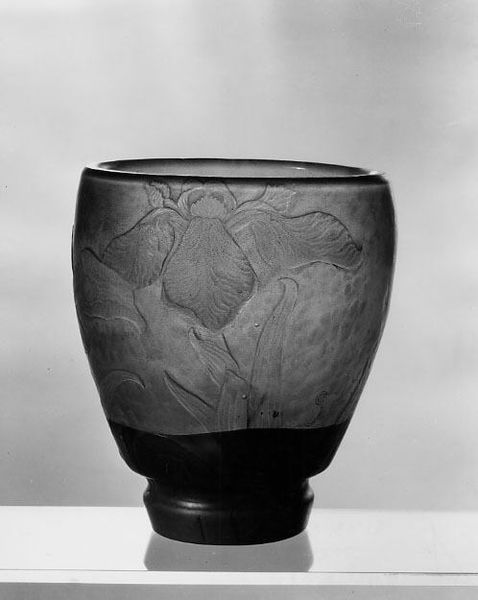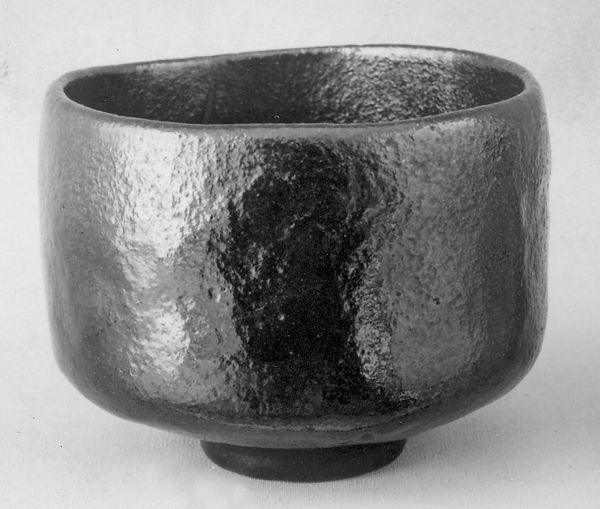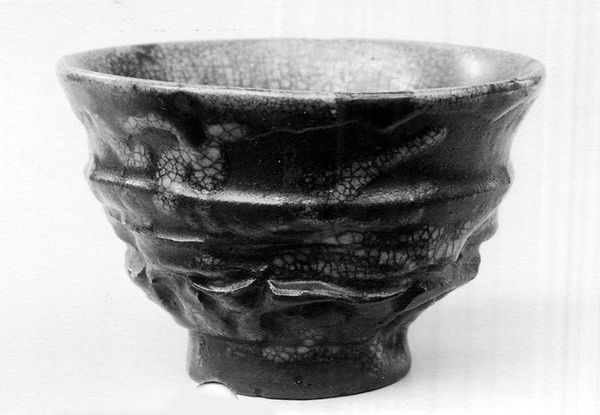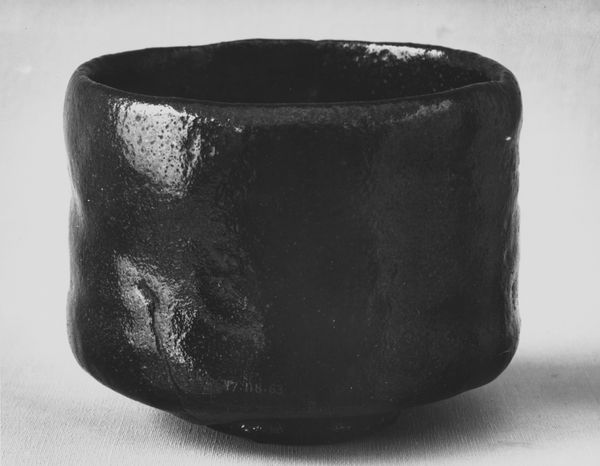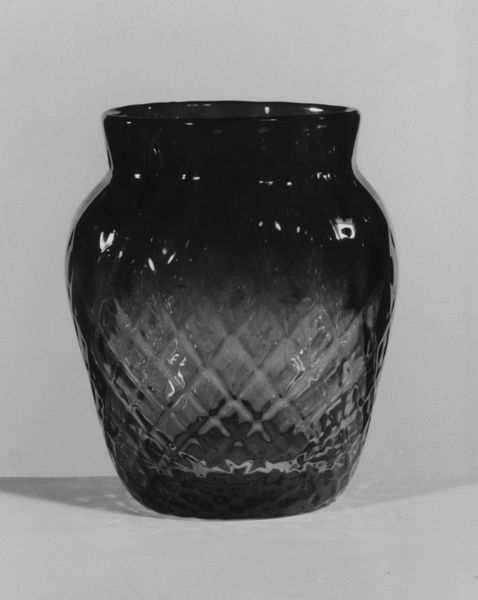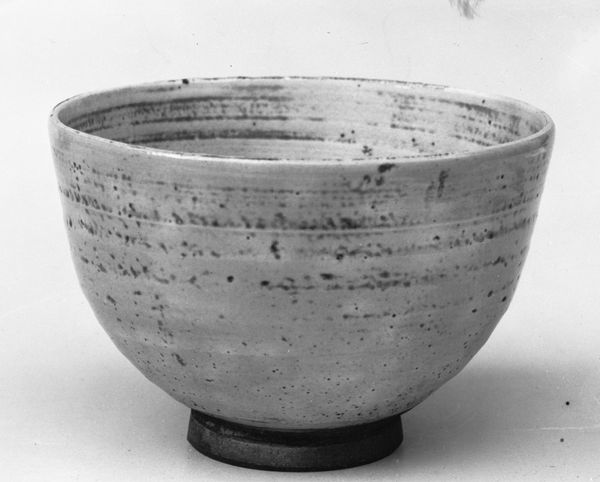
Dimensions: H. 12-1/4 inches (31.1 cm.)
Copyright: Public Domain
Curator: Up next is a stunning vase created by Ernest Chaplet, sometime between 1885 and 1895. The piece is made of ceramic and porcelain and falls within the decorative arts style. Editor: It's striking, isn’t it? The darkness, that intense, almost brooding quality of the glaze, is so complete, yet those white imperfections break the surface. What's your read on that choice of materiality? Curator: Chaplet was very much an innovator in the world of ceramics at this time, often experimenting with new glaze techniques and forms. His engagement with Eastern aesthetics is well-documented, and informs this piece. You know, it speaks to the broader cultural fascination with Japanism during the late 19th century. We also see this with figures such as Van Gogh. Editor: Precisely! This vase exists within a global exchange of ideas, echoing, perhaps even appropriating, non-Western techniques. The emphasis on craftsmanship, the natural glaze… Do you see any contemporary threads that can be linked with the vase? Curator: Absolutely. Looking at its function, as a vessel, a container, allows us to discuss display, even in the current moment. What does it hold? Ideas? Memories? And also, considering Chaplet’s context in shaping artistic spaces and influencing societal tastes… that vase comes to speak to hierarchies of craft and fine art, or who and how artwork should be received. Editor: So we can read into it the politics of taste, but also this constant renegotiation between the so-called fine and decorative arts, revealing underlying power dynamics in the art world itself. That also brings questions of gender, class and race. Curator: It does make us reconsider those binaries. Its sheer darkness can be a potent metaphor. Editor: A deep dive indeed; many layers within this seemingly simple vessel.
Comments
No comments
Be the first to comment and join the conversation on the ultimate creative platform.
